
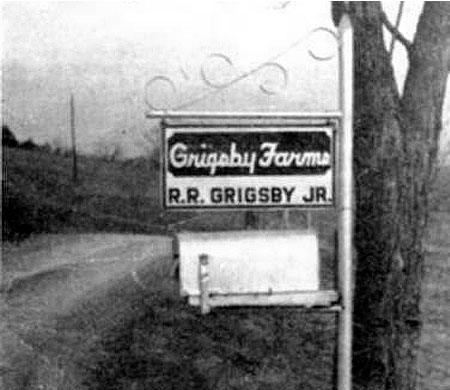 During the summer of 1940, Ralph Grigsby, Jr. began his life as a farmer on a 100-acre farm in Whitesburg, Tennessee which had been the homestead of his grandparents. Ralph, Jr. farmed with his father Ralph, Sr. In September 1940, Ralph Jr. married Elgeva Potter and she came to live on the farm with his parents. The Grigsby’s raised cattle along with crops for feed by using mules and a wagon. Ralph Jr. milked cows by hand and sold the milk to Pet Dairy for their “living money,” and ran steers to graze acreage as an investment. In 1942, Ralph Jr.’s brother, Sam, joined the farming operation. The next generation began at the farm in 1944 as Ralph, Jr. and Elgeva welcomed their first child, Robert Ralph Grigsby III (Robert).
During the summer of 1940, Ralph Grigsby, Jr. began his life as a farmer on a 100-acre farm in Whitesburg, Tennessee which had been the homestead of his grandparents. Ralph, Jr. farmed with his father Ralph, Sr. In September 1940, Ralph Jr. married Elgeva Potter and she came to live on the farm with his parents. The Grigsby’s raised cattle along with crops for feed by using mules and a wagon. Ralph Jr. milked cows by hand and sold the milk to Pet Dairy for their “living money,” and ran steers to graze acreage as an investment. In 1942, Ralph Jr.’s brother, Sam, joined the farming operation. The next generation began at the farm in 1944 as Ralph, Jr. and Elgeva welcomed their first child, Robert Ralph Grigsby III (Robert).
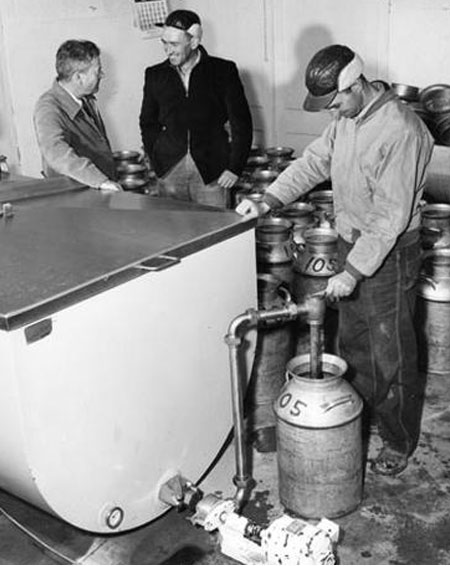 The Grigsby’s sold the 100-acre farm in 1944 and purchased 300 acres also in Whitesburg on Bent Creek. The Bent Creek farm had no electricity to the house or the barn. The Grigsby’s farmed on Bent Creek until 1960 bringing electricity to the house and barn and creating the first Grade “A” dairy in Hamblen County, Tennessee. The Grigsby’s family expanded at Bent Creek as they had three more children: Geraldine (Gerry), Joel, and Alan.
The Grigsby’s sold the 100-acre farm in 1944 and purchased 300 acres also in Whitesburg on Bent Creek. The Bent Creek farm had no electricity to the house or the barn. The Grigsby’s farmed on Bent Creek until 1960 bringing electricity to the house and barn and creating the first Grade “A” dairy in Hamblen County, Tennessee. The Grigsby’s family expanded at Bent Creek as they had three more children: Geraldine (Gerry), Joel, and Alan.
In 1959, the Grigsby’s purchased 650 acres in Lenoir City, Tennessee which included a 300-acre island in the middle of the Little Tennessee River. Ralph Jr. and Sam used their business ingenuity and bargained with the county highway department to purchase and move an old highway bridge from Hamblen County to the farm as a way to access the island. Ralph Jr. and Sam’s younger brother Bill restored the Lenoir City farm, eventually selling it to the Tennessee Valley Authority (TVA) in the late 1960s.
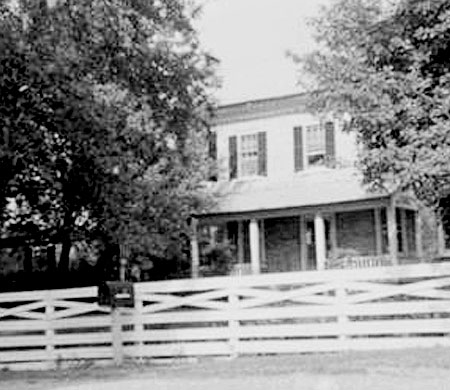 In 1960, the Grigsby Brothers purchased the 600 acre Hamilton Place on Nolichucky River bottom land in Lowland, Tennessee. Ralph Jr., Elgeva, and family lived in a circa 1799 limestone house which they named “The Rock House.” The Grigsby’s refurbished the Hamilton Place with Ralph, Sr. as a minority partner and purchased 500 more acres. In 1964, the Grigsby’s partnered with Valleydale Meat Company by installing a mile-long concrete feed lot which could feed up to 10,000 cattle at a time.
In 1960, the Grigsby Brothers purchased the 600 acre Hamilton Place on Nolichucky River bottom land in Lowland, Tennessee. Ralph Jr., Elgeva, and family lived in a circa 1799 limestone house which they named “The Rock House.” The Grigsby’s refurbished the Hamilton Place with Ralph, Sr. as a minority partner and purchased 500 more acres. In 1964, the Grigsby’s partnered with Valleydale Meat Company by installing a mile-long concrete feed lot which could feed up to 10,000 cattle at a time.
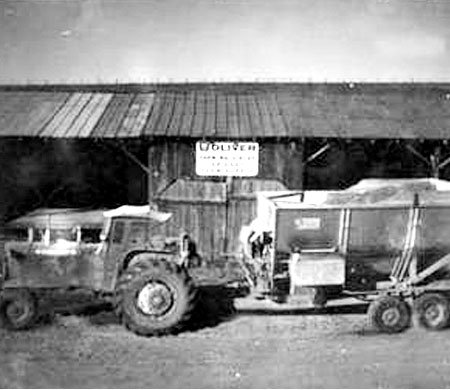
The Grigsby’s sold the Lowland farm in 1968 and purchased a dairy in Cocke County, Tennessee. This was also an operation in disrepair so the Grigsby brothers built a new dairy barn and rehabilitated the property. Within that same year, the Grigsby brothers purchased 2 sections of land near Belle Glade, Florida planted all in sod. The Grigsby’s removed sod from the property to pay the purchase price and later added sugar cane on the Braddock Ranch. With this purchase, Ralph and Elgeva then moved to Belle Glade, Florida.
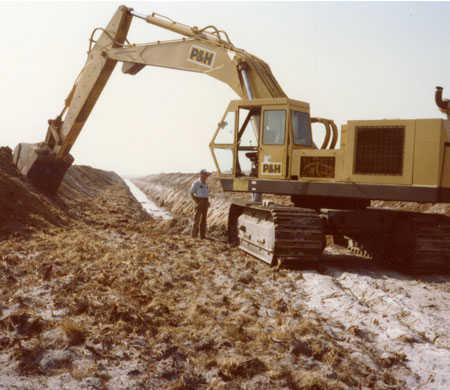 In 1970, the Grigsby Brothers purchased a 2,300-acre cattle ranch near Lake Placid, Florida and named it The Grigsby Brothers Ranch. In the early 1980s, the Grigsby Brothers partnered with MetLife and set 3,500 acres of citrus trees on the Lake Placid Ranch calling the operation Sun Ray Farms. The Grigsby Brothers created a custom operation everywhere they went as they always purchased property that had been mismanaged. They knew how to take the time to clean it up and make it worth something again, selling their investment for a profit.
In 1970, the Grigsby Brothers purchased a 2,300-acre cattle ranch near Lake Placid, Florida and named it The Grigsby Brothers Ranch. In the early 1980s, the Grigsby Brothers partnered with MetLife and set 3,500 acres of citrus trees on the Lake Placid Ranch calling the operation Sun Ray Farms. The Grigsby Brothers created a custom operation everywhere they went as they always purchased property that had been mismanaged. They knew how to take the time to clean it up and make it worth something again, selling their investment for a profit.
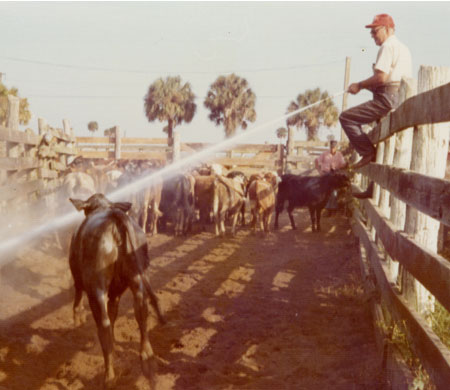
They continually saved money by repurposing used items and customizing items they could make work better than new. The Grigsby Brothers were shrewd traders and always did their homework, researching everything before they made decisions. Throughout the years, both Ralph Jr. and Sam’s sons were involved in farming operations in different capacities as was Ralph’s son-in-law, Harold Hale. During the 1970’s and 1980’s, the Grigsby Brothers also owned and operated a cattle feedlot in Texas.
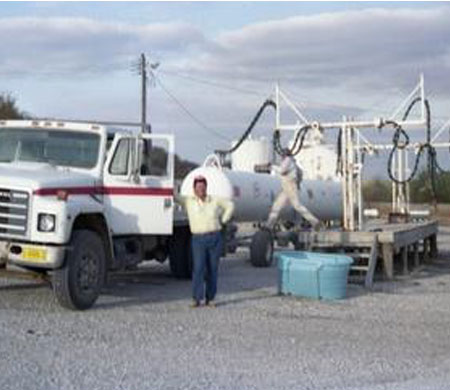 Ralph, Jr. had always had a desire to own and farm land in the heart of the Corn Belt, specifically Illinois. He learned of nearly 13,000 acres being sold by Nuclear Resources, a division of Commonwealth Edison near Chandlerville, Illinois. The acreage had been assembled by Commonwealth Edison in the late 1960’s and early 1970’s along with an additional 15,500 plus acres for the purpose of building a 5,000 acre lake near Chandlerville to support a coal fired power generating station and a coal strip mine. In the early years of Commonwealth ownership, most existing farmsteads were razed and land improvements deferred as part of their plan to convert the land. With the advent of nuclear power and its rising popularity, Commonwealth Edison eventually abandoned their plans for the coal fired power plant and decided in 1987 to liquidate their portion of land holdings held under the name of Nuclear Resources. This was the area of the property which had been acquired for strip mining purposes and they listed it for sale.
Ralph, Jr. had always had a desire to own and farm land in the heart of the Corn Belt, specifically Illinois. He learned of nearly 13,000 acres being sold by Nuclear Resources, a division of Commonwealth Edison near Chandlerville, Illinois. The acreage had been assembled by Commonwealth Edison in the late 1960’s and early 1970’s along with an additional 15,500 plus acres for the purpose of building a 5,000 acre lake near Chandlerville to support a coal fired power generating station and a coal strip mine. In the early years of Commonwealth ownership, most existing farmsteads were razed and land improvements deferred as part of their plan to convert the land. With the advent of nuclear power and its rising popularity, Commonwealth Edison eventually abandoned their plans for the coal fired power plant and decided in 1987 to liquidate their portion of land holdings held under the name of Nuclear Resources. This was the area of the property which had been acquired for strip mining purposes and they listed it for sale.
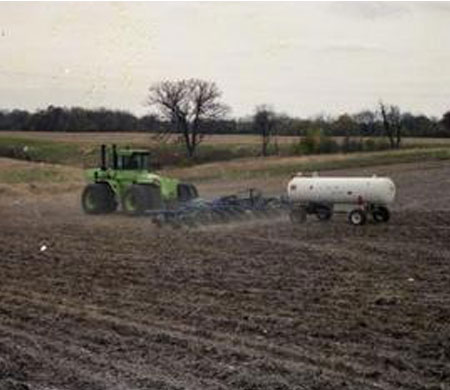 After several visits to inspect the Commonwealth Edison land offerings along with his son Alan, Ralph, Jr. decided to divest most of his Florida citrus holdings to his brothers and acquire the nearly 13,000 acres being sold. The initial closing took place in October of 1988. Tragically, Ralph Jr. was killed the day he signed the closing papers for the Illinois farm. To help overcome the loss of their father and honor his memory, the Grigsby family continued on with Ralph, Jr’s dream of farming in Illinois and they saw their first crop harvested in 1989.
After several visits to inspect the Commonwealth Edison land offerings along with his son Alan, Ralph, Jr. decided to divest most of his Florida citrus holdings to his brothers and acquire the nearly 13,000 acres being sold. The initial closing took place in October of 1988. Tragically, Ralph Jr. was killed the day he signed the closing papers for the Illinois farm. To help overcome the loss of their father and honor his memory, the Grigsby family continued on with Ralph, Jr’s dream of farming in Illinois and they saw their first crop harvested in 1989.
Before the Grigsby purchase, the property was managed by The First National Bank of Springfield through their Trust / Farm Management Department who was responsible for leasing and providing general oversight of the property during the Commonwealth ownership. The Grigsby family decided to retain the management services of the FNB of Springfield to assist with the conversion of the property back to a prime agricultural holding. When the sale to the Grigsby’s was finalized, a plan designed by Ralph, Jr. was immediately put in place to reclaim approximately 2,000 acres of pastureland which had become overgrown with honey locust and Osage orange (hedge). This multi-year project included the clearing of brush, reestablishment of cool season pasture grass, construction of livestock watering ponds, and constructing miles of new fences.
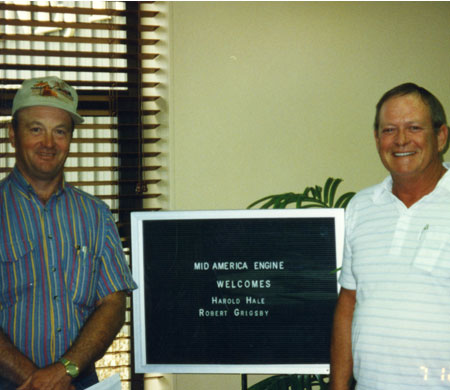 Once completed, these pasture areas which were surrounded by tillable cropland, were leased back to tenant farmers. As this project was completed in the early 90’s, attention was then placed on implementation of conservation practices, including waterways, water sediment control structures, field buffer strips, and selective placement of CRP acres. Farm Manager, Randall Leka, was recognized with a National Conservation Award from Agri-Finance Magazine and the National Association of Soil Conservation Districts for the conservation efforts implemented at the Grigsby farm.
Once completed, these pasture areas which were surrounded by tillable cropland, were leased back to tenant farmers. As this project was completed in the early 90’s, attention was then placed on implementation of conservation practices, including waterways, water sediment control structures, field buffer strips, and selective placement of CRP acres. Farm Manager, Randall Leka, was recognized with a National Conservation Award from Agri-Finance Magazine and the National Association of Soil Conservation Districts for the conservation efforts implemented at the Grigsby farm.
In 1992, the Harold & Gerry Grigsby-Hale family arrived in Illinois to farm and brothers Robert and Joel along with their families joined them in 1993. The youngest brother Alan stayed in Florida managing their remaining orange grove properties, but consulted on the Illinois farming operations and visited the property often. It was at this time that the first infrastructure was built consisting of grain bins, a dump pit, scales, and a scale house located near the intersection of Rogge Road and Markert Avenue. Harold, Robert, and Joel then combined their resources by farming together. As Grigsby Farm grew, so did the need for farm personnel, infrastructure, and diversification.
Beginning in the early 2000’s, the farm continued its emphasis on conservation and improving the land which evolved into the farm doing all of its own land improvement including waterways, water sediment control structures, stabilization structures, surface and sub-surface drainage. This expertise and commitment eventually evolved into a land improvement business serving the surrounding communities as well as the farm’s needs.
By the late 2000’s, the family chose to convert most of its Illinois pastureland back to native prairie grass with a long-term goal of creating a more pristine, sustainable, and environmentally sound farming operation. The conversion of the pastureland back to native prairie grass has allowed the farm to continue to strategically develop and manage each asset.
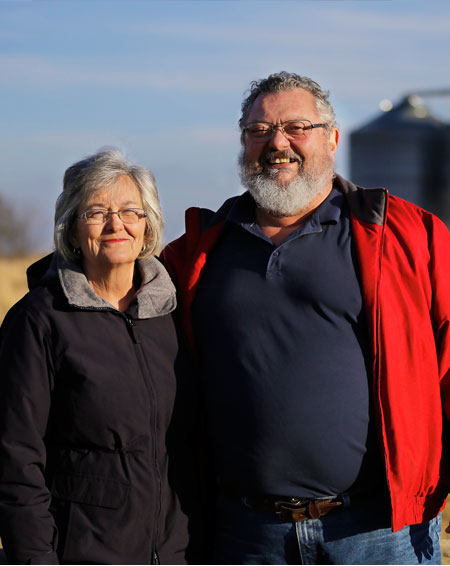 Brother and Sister: Gerry Grigsby Hale and Joel Grigsby
Brother and Sister: Gerry Grigsby Hale and Joel Grigsby
The Grigsby is located in West Central Illinois, which places it in the region of the country known nationally for large whitetail deer. The national notoriety for the region is complimented by the State of Illinois development of the 15,500-acre state park—The Jim Edgar Fish and Wildlife Area. It is purposefully managed for wildlife including whitetail deer, and abuts The Grigsby along its west property boundaries.
In combination, these two large parcels represent nearly 30,000 contiguous acres which are intensely managed for trophy whitetail deer. This significantly contributes to the progression of The Grigsby’s management of the wildlife and habitat resources from efforts beginning with the Menard / Cass Hunt Club through the 1990’s and into the early 2000’s. These outfitting efforts eventually evolved into a strategic alliance with Savage Outdoors.
As the family farming operation grew so has the grain facility located in the center of the property. Periodic expansions have occurred since its origin in the early 1990’s with the most rapid period of expansion taking place between 2010 and 2012. It was then the storage capacity grew from just under a million bushels of capacity to nearly two million bushels, with expanded wet receiving and drying capacity. The facility is well configured to condition and segregate identity-preserved commodities meeting specific end user demand.
With the death of Robert Grigsby in 2006 and Alan Grigsby in 2012, Grigsby Farm opened a new chapter in the life of the farm. In 2015, the Grigsby Family made a major commitment to the swine industry by beginning construction of two wean-to-finish swine sites, one in Menard County and the other in Cass County. The Menard Site went into production in late 2015 with the Cass Site beginning production in early 2016. Both sites are permitted for 9,306 animal units. The manure from operations is stored in deep pits under the barns for later application to adjoining fields via the direct injection method. Manure, as an organic compound, in accordance with a nutrient management plan will replace nearly 100 percent of the commercial fertilizer on select fields where corn, soybeans, and wheat will be grown.
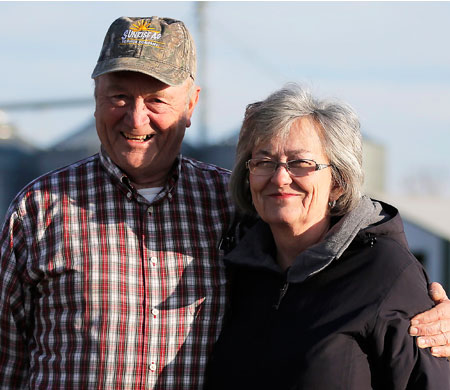 Grigsby Farm has a staff of supportive and committed employees, and through their hard work and devotion, we are looking forward to see what the future holds for the life of the farm. Harold continues to be actively involved in the daily operations as do several family members of the 5th generation. As the reins have been passed to the next generation, the Grigsby family’s commitment to farming with ingenuity, integrity, and quality remains strong.
Grigsby Farm has a staff of supportive and committed employees, and through their hard work and devotion, we are looking forward to see what the future holds for the life of the farm. Harold continues to be actively involved in the daily operations as do several family members of the 5th generation. As the reins have been passed to the next generation, the Grigsby family’s commitment to farming with ingenuity, integrity, and quality remains strong.
A marriage built around farming: Harold & Gerry Grigsby Hale were married for 48 years before Gerry passed away in 2018.